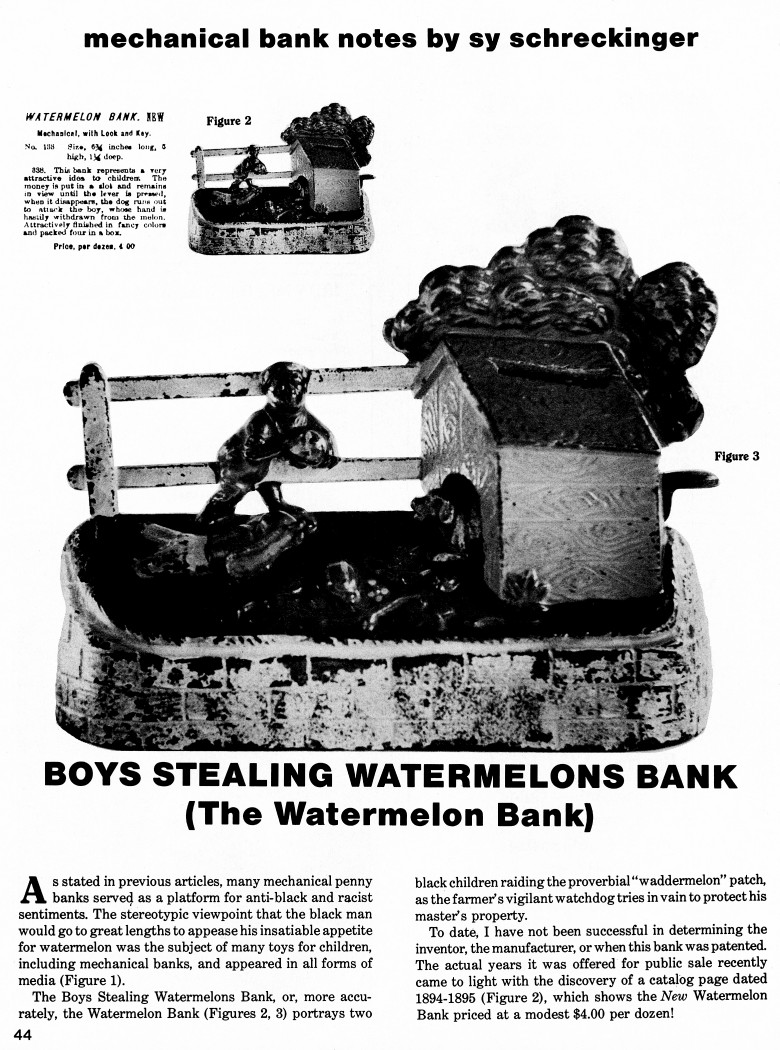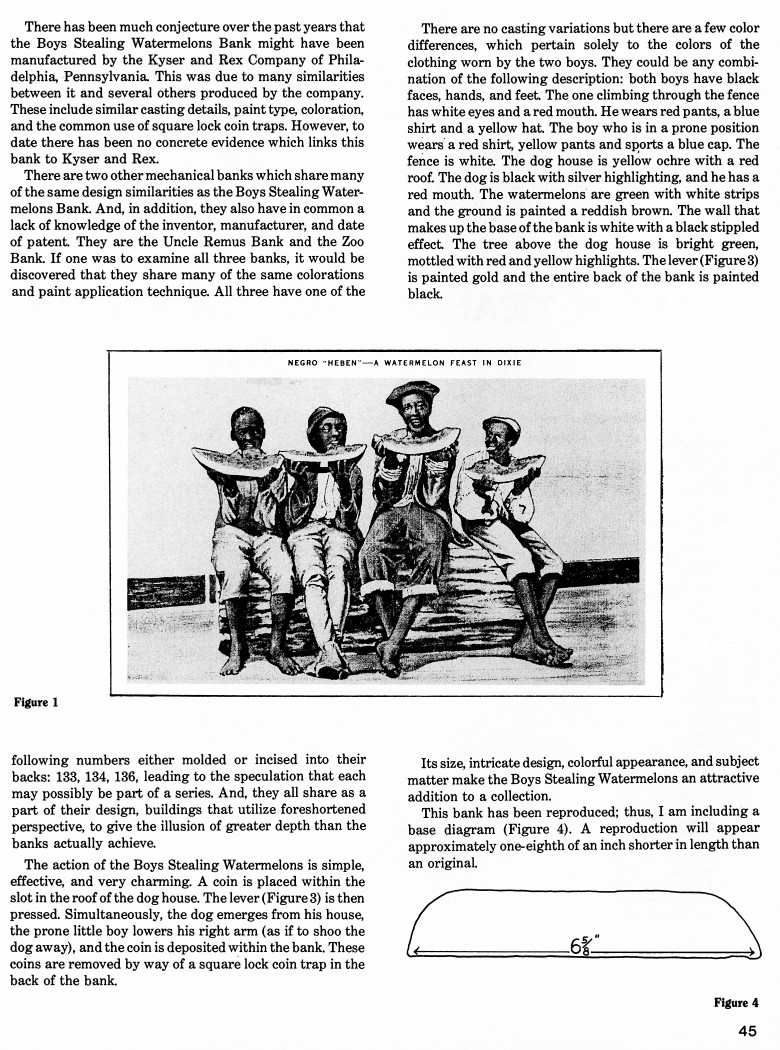|
Boys Stealing
Watermelons Bank
(The Watermelon Bank)
by Sy Schreckinger – ANTIQUE TOY WORLD Magazine – March, 1985
As
stated in previous articles, many mechanical penny banks served as a
platform for anti-black and racist sentiments. The stereotypic viewpoint
that the black man would go to great lengths to appease his insatiable
appetite for watermelon was the subject of many toys for children,
including mechanical banks, and appeared in all forms of media (Figure 1).
The Boys Stealing Watermelons Bank, or, more accurately, the
Watermelon Bank (Figures 2, 3) portrays two black children raiding the
proverbial "waddermelon" patch, as the farmer's vigilant watchdog tries in
vain to protect his master's property.
To date, I have not been successful in determining the inventor, the
manufacturer, or when this bank was patented. The actual years it was
offered for public sale recently came to light with the discovery of a
catalog page dated 1894-1895 (Figure 2), which shows the New Watermelon
Bank priced at a modest $4.00 per dozen!
There has been much conjecture over the past years that the Boys
Stealing Watermelons Bank might have been manufactured by the Kyser and
Rex Company of Philadelphia, Pennsylvania. This was due to many
similarities between it and several others produced by the company. These
include similar casting details, paint type, coloration, and the common
use of square lock coin traps. However, to date there has been no concrete
evidence which links this bank to Kyser and Rex.
There are two other mechanical banks which share many of the same
design similarities as the Boys Stealing Watermelons Bank. And, in
addition, they also have in common a lack of knowledge of the inventor,
manufacturer, and date of patent. They are the Uncle Remus Bank and the
Zoo Bank. If one was to examine all three banks, it would be discovered
that they share many of the same colorations and paint application
technique. All three have one of the following numbers either molded or
incised into their backs: 133, 134, 136, leading to the speculation that
each may possibly be part of a series. And, they all share as a part of
their design, buildings that utilize foreshortened perspective, to give
the illusion of greater depth than the banks actually achieve.
The action of the Boys Stealing Watermelons is simple, effective, and
very charming. A coin is placed within the slot in the roof of the dog
house. The lever (Figure 3) is then pressed. Simultaneously, the dog
emerges from his house, the prone little boy lowers his right arm (as if
to shoo the dog away), and the coin is deposited within the bank. These
coins are removed by way of a square lock coin trap in the back of the
bank.
There are no casting variations but there are a few color
differences, which pertain solely to the colors of the clothing worn by
the two boys. They could be any combination of the following description:
both boys have black faces, hands, and feet. The one climbing through the
fence has white eyes and a red mouth. He wears red pants, a blue shirt and
a yellow hat. The boy who is in a prone position wears a red shirt, yellow
pants and sports a blue cap. The fence is white. The dog house is yellow
ochre with a red roof. The dog is black with silver highlighting, and he
has a red mouth. The watermelons are green with white strips and the
ground is painted a reddish brown. The wall that makes tip the base of the
bank is white with a black stippled effect. The tree above the dog house
is bright green, mottled with red and yellow highlights. The lever (Figure
3) is painted gold and the entire back of the bank is painted black.
Its size, intricate design, colorful appearance, and subject matter
make the Boys Stealing Watermelons an attractive addition to a collection.
This bank has been reproduced; thus, I am including a base diagram
(Figure 4). A reproduction will appear approximately one-eighth of an inch
shorter in length than an original.
|


